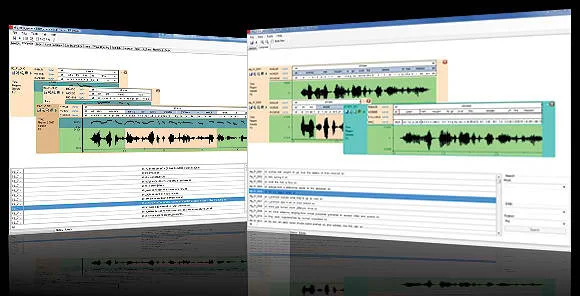Cronto
Software security house Vasco has acquired UK-based Cronto for a maximum EUR17 million in cash.
Cronto was founded in 2005 as a University of Cambridge spin-out and supplies secure visual transaction authentication and signature solutions for online banking applications. The CrontoSign solution (also known as photoTAN) has been chosen to secure transactions at Commerzbank and Raiffeisen Switzerland.
Netherlands-based Vasco says it will add the patented CrontoSign products to its offerings for the global banking market and work towards full integration with its Digipass product line.
Vasco says it intends to tap in to Cronto's close ties with Cambridge University and access to expertise in advanced statistical data analysis and machine learning algorithms.
"The acquisition of Cronto is a strong example of asco investing in its future growth," states T. Kendall Hunt, Vasco's chairman and CEO. "Through our make-or-buy strategy for new technologies, we will keep scanning the market for suitable companies to join Vasco."
VASCO acquired all of the stock of Cronto in exchange for an initial cash consideration of Euro 15 million and contingent cash consideration in the form of an earn-out of up to a maximum of Euro 2 million.
Phonetic Arts
Google Acquires Phonetic Arts To Make Robo-Voices Sound Human
No, Google hasn’t acquired Groupon (yet). But it does have a smaller, though very interesting acquisition to announce: it’s just acquired Phonetic Arts, a company based in the UK that works on speech synthesis in games.
Phonetic Arts makes technology that can convert lines of recorded dialog into a ‘speech library’ — feed it a few hundred lines of recordings using your voice, and it can then piece together those sounds to generate new sentences that sound surprisingly realistic. Up until now Phonetic Arts has primarily been focused on using this technology for games, but Google intends to use it more broadly to make its own automated voices sound more fluid and human.
In case you haven’t noticed, Google has been paying a huge amount of attention to its voice recognition and transcription technologies over the last few years (they’ve been researching it much longer, but now the tech is making it into products). YouTube now includes automatic voice transcription captions for millions of videos; Android has voice recognition integrated throughout the OS; and Google has voice search apps for other mobile platforms, like the iPhone.
But while these voice recognition apps are getting much better, whenever they need to read something back to you (for example, for language translation or GPS navigation) it’s quite obvious that you’re listening to a computer. Which is where Google is planning to start applying Phonetic Arts’ technology.
Also worth pointing out: in its official blog post, Google specifically talks about the growing tech scene in London:
There’s a particular focus right now in the U.K. on technology and innovation, and we’re delighted to be deepening our investment in the country with this acquisition. We already have a strong engineering center in London and look forward to welcoming Phonetic Arts to the team. We are excited about their technology, and while we don’t have plans to share yet, we’re confident that together we’ll move a little faster towards that Star Trek future.
3Way Networks
Extends Mobile Broadband Leadership With UMTS Pico and Femto Cell Pioneer
CHELMSFORD, MA AND CAMBRIDGE, UK– May 2, 2007 – Airvana, Inc. a leading provider of network infrastructure products used by wireless carriers to provide mobile broadband services, today announced it has acquired 3Way Networks, a provider of home base stations and industry-tailored solutions for UMTS markets. Terms of the deal are undisclosed.
The acquisition furthers Airvana’s strategy to address UMTS radio access networks and to deliver fixed-mobile convergence and in-building mobile broadband solutions for both UMTS and CDMA2000 markets. 3Way Networks’ pico and femto cell solutions will complement Airvana’s Universal Access Gateway (UAG), a high-capacity network element through which we expect to provide secure access to core network services for UMTS, CDMA2000, Wi-Fi and other Internet Protocol (IP)-based wireless devices.
“This is a logical step in both companies’ evolution,” said Simon Albury, managing director of 3Way Networks. “We believe the acquisition validates our technology, and provides 3Way Networks with considerable resources and market reach.”
3Way Networks’ technology can enable mobile operators to offer UMTS voice, video and data cost-effectively into the home. The company also offers products that provide UMTS connectivity for military and transportation markets. Both 3Way Networks and Airvana have embraced a ‘flat’ architecture that combines multiple functions of a radio access network into the base station for simpler deployment, greater reliability and lower cost.
“Consumers increasingly want to make their mobile phone their primary phone”, said Sanjeev Verma, founder and vice president of business development of Airvana. “With this acquisition and our existing UAG product, Airvana anticipates providing such a solution for UMTS subscribers.”
About 3Way Networks
3Way Networks was founded in 2004 to develop a range of 3G wireless infrastructure solutions for military, aviation, maritime and mobile operator markets. The company has been shipping UMTS infrastructure products to a variety of customers since 2005 based around its innovative Integrated Network on a Card IN-c technology. 3Way is a headquartered in Cambridge, United Kingdom.
About Airvana
Airvana is a leading provider of network infrastructure products used by wireless carriers to provide mobile broadband services. Airvana’s software and hardware products enable wireless networks to deliver broadband-quality multimedia services to mobile phones, laptop computers and other mobile devices. These services include Internet access, e-mail, music downloads, video, IP-TV, gaming, push-to-talk and voice-over-IP. Airvana’s solutions enable new services and deliver carrier-grade mobility, scalability and reliability with relatively low operating and capital costs.
Worldwide, Airvana’s mobile broadband systems are deployed on six continents in 16 major networks by industry-leading service providers who demand high standards of carrier-class performance. Airvana has OEM agreements with Alcatel-Lucent, Nortel Networks, and QUALCOMM.
Airvana is headquartered in Chelmsford, MA, USA. For more information, please visit the company's Web site at http://www.airvana.com




